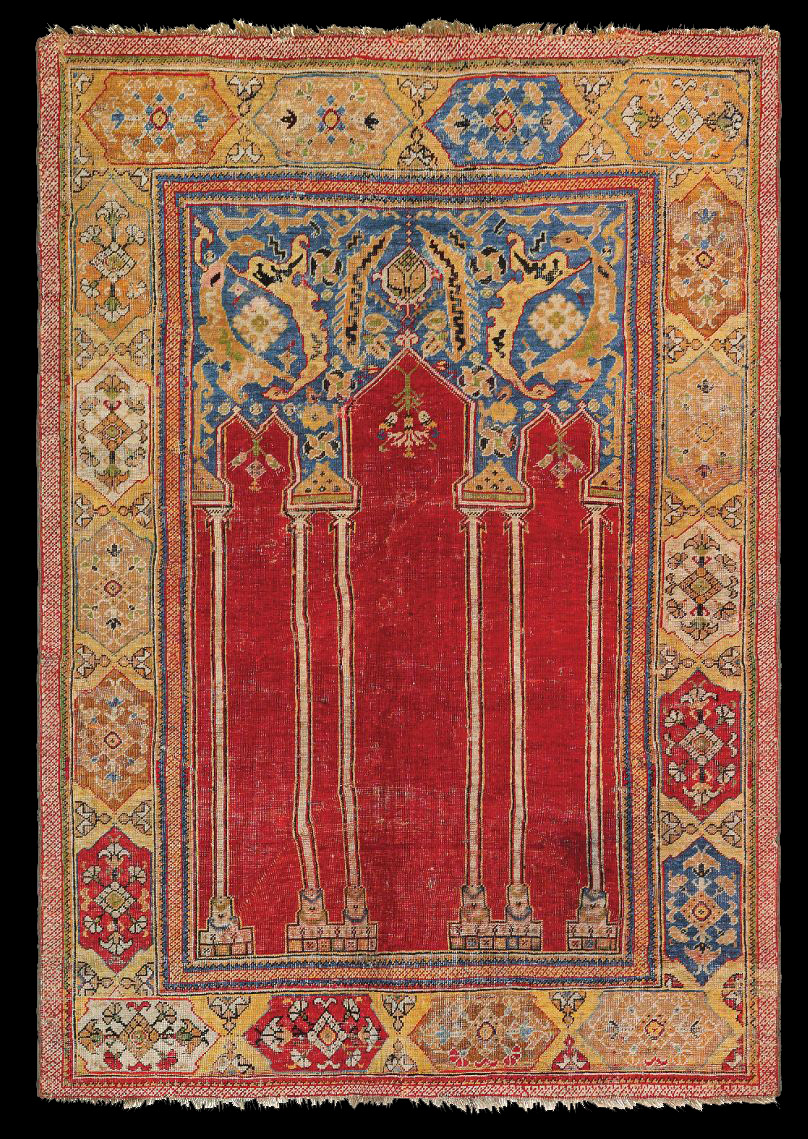Lot 47
A ‘TRANSYLVANIAN’ DOUBLE-COLUMN PRAYER RUG
WEST ANATOLIA,
FIRST HALF 17TH CENTURY
Some areas of uneven wear, light corrosion, a
few touches of repiling
and scattered small repairs, one small stain
5ft.11in. x 4ft. (180cm. x 122cm.)
£8,000-12,000 US$12,000-18,000
€9,000-13,000
This type of Transylvanian prayer rug has at times
been attributed to Ladik,
presumably on the basis of the panel of
tulips which appears above the triple
mihrab on some examples (Ferenc
Batari, Ottoman Turkish Carpets, Budapest,
1994, nos.66-71, pp.60-62,
ill. pp.155-160). Most scholars however think that
the present design
was brought by weavers to Central Anatolia with the earlier
examples
being made further west (J. Bailey, “Ladik Prayer Rugs”’, Hali, no.28,
October-December, 1995, p.25).
The development of the design of this
group was the subject of an article by May
Beattie (“Coupled-column
Prayer Rugs”, Oriental Art, New Series, vol.XIV, no.4,
Winter 1968,
pp.243-258). She traces the derivation of the design back to the
great
16th century court rugs such as the Ballard Prayer Rug in the Metropolitan
Museum (M.S. Dimand and Jean Mailey, Oriental Rugs in the Metropolitan
Museum of Art, New York, New York, 1973, no.105, p.233, ill. pp.158-159).
Christies LONDON
Oriental Rugs and Carpets
Tuesday 2
October 2012
PROPERTY FROM
The Collection of Daniele Ghigo and
various sources |

